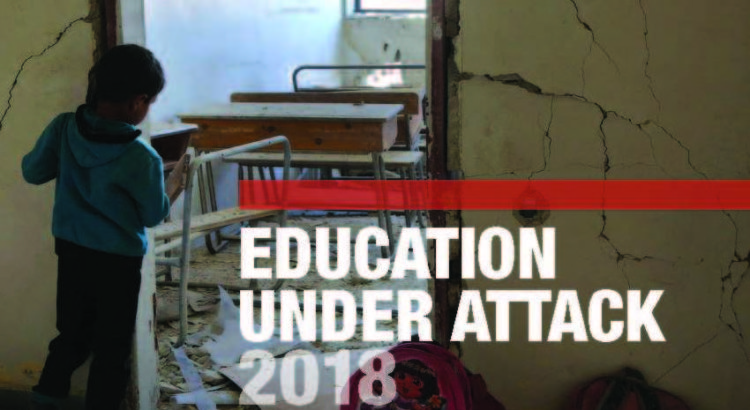Resumen: La Declaración de Escuelas Seguras es un compromiso político intergubernamental que brinda a los países la oportunidad de expresar apoyo para proteger a los estudiantes, maestros, escuelas y universidades del ataque durante tiempos de conflicto armado; la importancia de la continuación de la educación durante el conflicto armado; y la implementación de medidas concretas para disuadir el uso militar de las escuelas.
La Declaración se desarrolló a través de consultas con los estados en un proceso liderado por Noruega y Argentina en Ginebra a principios de 2015, y se abrió para su aprobación en la Conferencia de Oslo sobre seguridad Escuelas el 29 de mayo de 2015.
¿Cuáles son los beneficios de la educación en contextos de conflicto?
Las escuelas seguras brindan información que salva vidas, mitigan el impacto psicosocial de la guerra y pueden proteger niños de la trata, violencia sexual y reclutamiento por grupos armados. Las interrupciones en la educación pueden reducir la probabilidad de que los niños regresen a la escuela, incluso cuando están abiertos y, a largo plazo, pueden afectar las ganancias individuales y la capacidad de reconstrucción de un país. Quizás más importante para un niño, acceso a un espacio seguro para aprender ofrece una sensación de normalidad, rutina y calma en medio del caos de la guerra.
¿Qué aceptan los países que respaldan la Declaración?
Al unirse a la Declaración, los estados se comprometen a llevar a cabo varios pasos de sentido común para que sea menos probable que los estudiantes, maestros, escuelas y universidades serán atacados y mitigar lo negativo consecuencias cuando tales ataques ocurren
Gisela Schmidt-Martin | Coordinator, Guidelines for Protecting Schools and Universities from Military Use during Armed Conflict
Global Coalition to Protect Education from Attack (GCPEA)
What is the Safe Schools Declaration?
The Safe Schools Declaration is an inter-governmental political commitment that provides countries the opportunity to express support for protecting students, teachers, schools, and universities from attack during times of armed conflict; the importance of the continuation of education during armed conflict; and the implementation of concrete measures to deter the military use of schools.
Descargar: Questions and answers on the safe schools declaration
Fuente: http://protectingeducation.org/sites/default/files/documents/questions_and_answers_on_the_safe_schools_declaration_en.pdf









 Users Today : 30
Users Today : 30 Total Users : 35460293
Total Users : 35460293 Views Today : 40
Views Today : 40 Total views : 3419008
Total views : 3419008